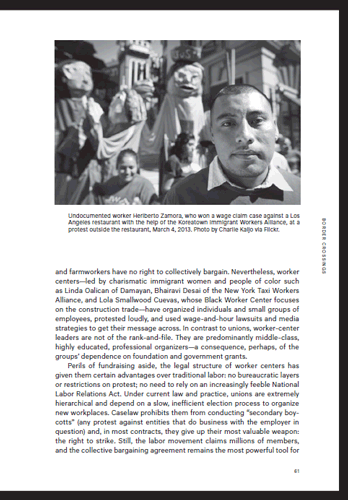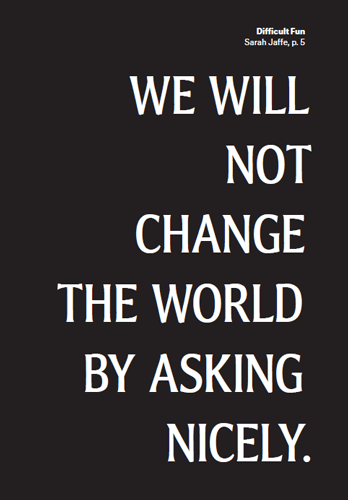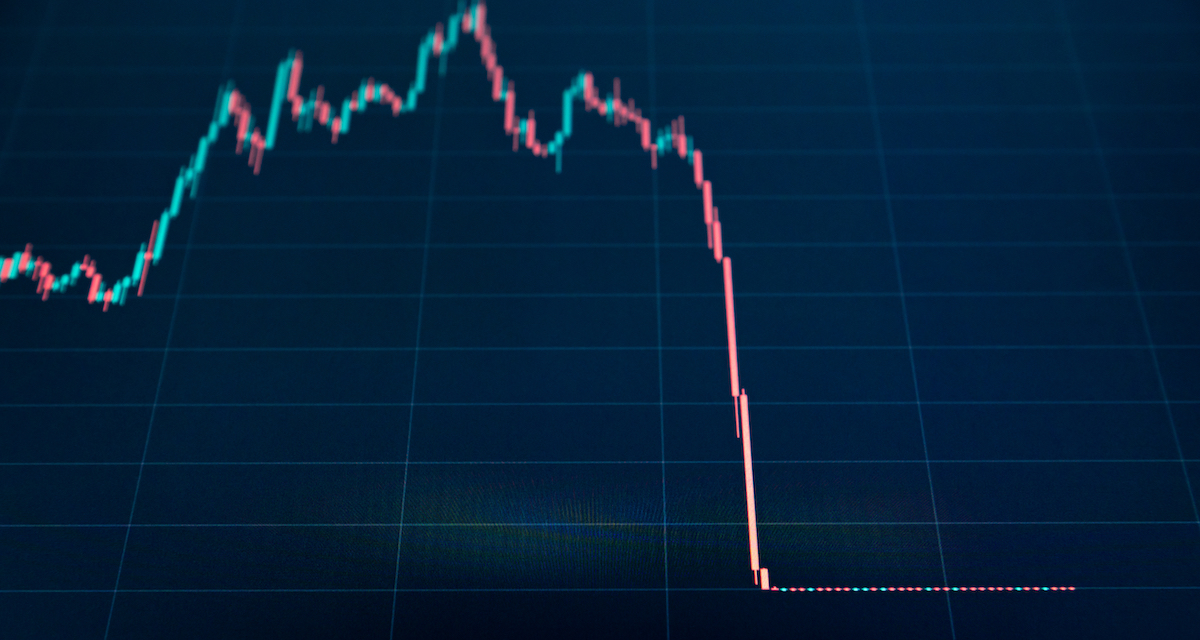The latest cryptocurrency crash illustrates why the entire financial sector needs to be subject to democratic control.
It’s impossible to know how much has been lost. The cryptocurrency market unraveled in the second week of May, and has continued to decline ever since. Between May 9 and May 13, the “algorithmic stablecoin” Terra and its “sister coin” Luna lost something like $40–45 billion of their market capitalization, and Terra broke its peg to the U.S. dollar. Luna’s price dropped to zero. Investors fled from closely connected cryptocurrencies; some fled from the cryptosphere altogether. Some analysts estimated that $300 billion had been lost in the crash in just four days. After six days, the estimate was $1 trillion. By late June, the entire crypto market had fallen in value by $2 trillion. The main Terra/Luna subreddit pinned contact information for suicide hotlines to the top of its page.
There is no way to verify these numbers. When we speak of investment capital being “lost,” sometimes we mean the loss of an initial investment—real money that someone once really had. Sometimes we mean a loss of expected future returns. And sometimes we mean something more hypothetical: if your stocks are worth half as much today as they were yesterday, you feel some loss, even if you never actually “had” that money, and even if your current investment is worth more than you initially put into it. But, regardless of the scale of the fall, this isn’t the first crypto crash. Between November 2021 and January 2022, the crypto market “lost” an estimated $1 trillion. Before that, there were bubbles and crashes in 2011, 2014–15, and 2018. One interpretation of these crashes is that volatility is endemic to the crypto market. Another is that crypto itself is a crisis.
Much like finance in general, crypto is a strange realm full of technical complexity, opaque chains of cause and effect, international dynamics, and fragmented legal jurisdictions. But finance at least is subject to some regulation, so episodes of impunity are usually limited to crises and scandals. Crypto contains all of the risks of traditional finance—without meaningful regulation and with a commitment to anonymity. For those reasons, crypto is also a space of impunity, in which institutions and structures allow people to cause harm without facing consequences.
Impunity is the result of three problems: precedent, in that humans have far more creativity for innovating wrongdoing than regulation; culpability, in that leaders tend not to be personally responsible for many crimes and usually are protected by layers of deniability; and scale, in that mass crimes tend to outstrip the individual orientation of legal regimes. We tend to find impunity in conditions of violent conflict, or as a characteristic of sovereign power. But it also exists in the economic sphere, especially in moments of financial crisis. Impunity may seem like a permanent element of power, but it has its own history, and the history of financial capitalism is likewise in part a history of impunity.
Crypto’s problems are bigger than impunity, and the problem of impunity is not at all limited to crypto. Something that distinguishes economic life from political, moral, or legal life is that great harm can and will happen to a great many people and nobody in particular would be at fault. But the extremity of the recent crypto crash underscores our need for a better language with which to condemn and regulate economic harm. It is a moment, like the 2008 crisis, when impunity has become so visible that its existence is undeniable. And once we learn to recognize it, we start to find it everywhere.
When I wrote these words, there were about 19,000 cryptocurrencies in existence. By the time you read these words, many of them will have failed. If you have heard of only one cryptocurrency, it is almost certainly Bitcoin. Bitcoin is a decentralized peer-to-peer network with no single clearinghouse and no equivalent to a central bank or money-issuing authority. Bitcoin the platform issues currency units called “bitcoins,” whose value is determined by supply and demand on several different exchanges. There is no single price of bitcoin. Demand is driven by its use in transactions. Supply is determined through “mining”: using computer processing power to solve increasingly complicated math problems. The inventors of Bitcoin have consistently maintained that there will be a finite supply of bitcoins, alleviating the danger of inflation and creating instead an intentionally deflationary system. All transactions are anonymous, and bitcoins are held in a digital “wallet.” A bitcoin spent in a transaction is really a unique code and a series of past transactions of that code in a kind of digital ledger, known as the blockchain. Imagine if every dollar you spend came with a list of every past transaction that dollar had been used in, thereby proving that you obtained it legally. It’s a way to verify transactions while preserving anonymity. Once a transaction happens, notice of it is sent to the entire Bitcoin network, and all the “miners” in the system race to verify the ledger of past transactions. If you win the verification race, you are awarded with new bitcoins.
This system is terrible in an impressive variety of ways. First, it is colossally inefficient. Bitcoin can only process about seven transactions per second. (Visa does something like 1,700 per second, and claims they are capable of 24,000.) Having so many different miners in the system race to verify the same transaction creates a gigantic amount of wasted time and energy. And, as transaction chains get longer and the networks get bigger, verifying transactions gets more difficult, which has led to an arms race for processing power. Bitcoin miners are partly responsible for the computer-chip shortage that has made it difficult to get new cars, computers, and PlayStations. By one calculation, Bitcoin consumes more electricity than Finland. An individual transaction produces about half a ton of carbon dioxide. Bitcoin has probably undone all the reductions in greenhouse-gas emissions produced by the adoption of electric vehicles.
Second, it is very difficult to cash out. To turn bitcoins (or any cryptocurrency) into dollars, you need to sell them on a crypto exchange—a transaction that has to be verified by the blockchain, during which time the price of your bitcoins may change. You pay a transaction fee for the exchange, and, because so few transactions can be processed at any one time, users often bid to prioritize their transactions. On Ethereum, another prominent cryptocurrency network, these bids are called “gas fees,” which sometimes average between $50 and $100 per transaction. (It’s difficult to tell exactly, because these are paid in units of Ether, a cryptocurrency that itself varies in dollar value.) If a few big players are bidding to clear huge transactions, however, it can result in a “gas war” that drives the per-transaction fee well into the thousands of dollars. There are other obstacles. Coinbase, perhaps the largest U.S. exchange, requires users to upload additional identification in order to cash out, with long delays and no customer service. In moments of crisis or liquidity shortage, crypto exchanges and crypto banks often freeze transactions entirely.
After you successfully sell cryptocurrency—potentially after a delay, some fees, and a price change—the transaction then proceeds to your bank. Unlike cryptocurrency exchanges, banks have to follow money-laundering and securities regulations, so they employ a small army of fraud officers to scrutinize large payments from unverifiable sources. Your bank may reject the transaction, refuse your transfers, freeze your account, or notify tax authorities. In 2017, Wells Fargo refused to process any transfers to or from Bitfinex, a crypto exchange in the British Virgin Islands. An exchange can lock you out of your money, your bank can lock you out of your account, and you can lose your money without any means of getting it back. On June 13, Binance, the biggest crypto exchange in the world, and Celsius Network, a crypto lender, both froze withdrawals of bitcoin. And if you are hacked or scammed or just made a mistake, crypto transactions can’t be canceled.
The difficulty of cashing out has two major implications. First, it means the only transactions that make much sense to do with cryptocurrency are those in which the need for anonymity trumps the high costs and slow speed—which is why crypto is so strongly associated with drugs, money laundering, ransomware attacks, and child pornography. Second, it means there is a built-in incentive to get new people to buy into crypto: they not only create demand to support prices but also allow existing users to cash out.
Reports about the rising prices of bitcoin are effectively advertisements aimed at getting new people to buy crypto. Accounts of NFTs and play-to-earn games fulfill the same function. Lately, actual advertising for crypto has been everywhere. Crypto.com has produced advertisements with Matt Damon, Tom Brady, and Stephen Curry, and renamed the NBA arena in Los Angeles. A gaggle of celebrities have tweeted crypto endorsements and launched NFT lines; Kim Kardashian has even been sued for a sponsored Instagram story about EthereumMax. The Washington Nationals cut a $38 million sponsoring deal with Terra shortly before it imploded, so the team may spend the next five years promoting a cryptocurrency that has already failed. At least they got paid in dollars.
Because blockchain cryptocurrencies such as Bitcoin and Ethereum have become too slow and expensive to use as functional currencies, they are now little more than speculative investments for people with a lot of cash and a high appetite for risk. This has given rise to another crypto category: stablecoins. Whereas bitcoin’s price varies widely (including between different exchanges at the same time), stablecoins are designed to be exchanged for dollars at a fixed rate. The most notable, Tether, was pegged to the dollar one to one. Stablecoins are supposed to solve the problem of cashing out: there’s no need to turn bitcoins into dollars if you can turn them into Tether. That meant Tether needed dollar reserves, which it aimed to raise from investors. But raising dollars to issue stablecoins doesn’t by itself produce new dollars for investors.
Tether and other stablecoins are left with two options. The first is to hold a mix of cash and various (allegedly) liquid securities. Many stablecoins, however, do not report their reserves at all, and those that do, like Tether, do not provide any kind of external verification of their holdings. In 2017, Tether argued that owners of its coins had no contractual rights, legal claims, or guarantees to ever be able to actually exchange them for dollars. A report from the company in May 2021 showed that only about 3 percent of its reserves are backed by cash; about 50 percent are backed by commercial paper. (The report resulted from an agreement between the company and the New York attorney general, whose office was investigating whether Tether helped Bitfinex, which owns the company that in turn owns Tether, cover up $800 million in losses.) Since early June, investors and regulators have been trying to find Tether’s reserves, which seem to be held in a series of banks in the Bahamas.
The second option is to use an algorithm to manage supply of the coin. Terra (not to be confused with Tether) is the most famous example of an “algorithmic stablecoin.” If too many people sold Terra at once, thus increasing its supply and pushing the price of a coin below $1, the algorithm was supposed to instantly swap one Terra for the floating cryptocurrency Luna. This would reduce the Terra in circulation, bringing the price back up. The reverse operation would automatically kick in if Terra’s price went too high.
The Terra crash in May had both a proximate and a structural cause. The proximate cause was a bank run. Terra doesn’t hold its own reserves, but it has claims on reserves held by an entity called Anchor, which is essentially trying to be a bank for crypto. It held deposits of Terra that it lent out to other people, and paid and received interest in Terra, claiming its depositors would receive up to 20 percent per annum. On the evening of May 7, a small group of “several well-funded entities” partly working through the Celsius Network withdrew $500 million in various cryptocurrencies from Anchor, leaving it with something like $35 million in reserves to cover $8.7 billion in deposits. Realizing that was nowhere near enough, holders of Terra precipitated a classic bank run. They all tried to dump their Terra simultaneously, driving down the price of a coin well below the $1 peg. The funds behind Luna tried to bail it out, apparently to the tune of $750 million, but to no avail. The sell-off of Terra suddenly and vastly increased the supply of Luna exactly when demand for it collapsed. If Luna was meant to stabilize Terra, and Terra couldn’t be saved, then what was the point of Luna? Holders dumped Luna, too, and it lost 99.99 percent of its value. About $45 billion in market capitalization evaporated in a week.
Once Terra and Luna collapsed, investors got worried about other cryptocurrencies. By May 12, there was a generalized sell-off under way. Tether paid out $10 billion in withdrawals; Bitcoin lost 60 percent of its value. Coinbase laid off 18 percent of its workforce. Celsius Network froze all withdrawals and transfers for its 1.7 million customers. Layoffs, bankruptcies, and freezes continue to this day. As of July 13, Bitcoin was down 70 percent from its peak.
There is also a structural explanation for why all of this is happening. In early May, the Federal Reserve announced a “jumbo” increase in interest rates, twice its normal pace, and signaled it may hike interest rates seven times by the end of 2022. (Rates were raised again in mid-June and late July.) That bump made borrowing money just expensive enough, and led investors to rebalance their portfolios just enough, that the continual spigot of cheap money flooding into the crypto economy slowed just enough to precipitate a crash. The Fed means to precipitate a recession of the real economy, and in a recession everyone wants dollars, not algorithmic stablecoins or Bored Ape NFTs.
Like WeWork, Uber, and other tech enterprises with preposterous market capitalizations and no profits, cryptocurrency is a morbid symptom of an era of unprecedentedly cheap money that has persisted since the 2008 crisis. Trillions of dollars have sloshed into all sorts of destructive and stupid things. Like most other financial bubbles, crypto is the result of cheap liquidity, opaque innovations, and vigorous marketing. The era of cheap money is coming to an end, closing this phase of financial history. So what else can past financial bubbles tell us?
It is vitally important to historicize crypto—to show how it rode a tidal wave of cheap money and preyed on people’s diminished opportunities and lost hope after 2008. But it is also worth showing how crypto echoes nearly all of the disasters of financial history. For all its talk about the future, crypto is a gruesome extrusion of the past.
Let’s start with the obvious scams. NFTs and cryptocurrencies with floating prices—such as bitcoin—are full of wash trades, wherein traders anonymously buy and sell NFTs and coins to themselves, to drive prices up. Wash trades were endemic in nineteenth-century commodity exchanges, and were eventually outlawed in the United States by the 1936 Commodity Exchange Act. Many new crypto ventures are “rug pulls,” in which promoters hype a new project and then run off with all the investors’ money. Because they so often leave investors with worthless tokens, crypto rug pulls resemble the wildcat banks of the nineteenth century. Before the National Bank Act of 1863 and the establishment of a uniform national currency, states granted banking charters with almost no oversight. Many enterprising bankers would set up establishments, accept deposits, issue their own paper money, and then run off with all the deposits, leaving worthless paper banknotes behind. In the backlash, Arkansas and Iowa banned banks entirely for most of the 1840s and ’50s.
Another common scheme in the cryptosphere is the pump and dump: early investors drive up prices by bringing in new buyers and through enthusiastic public pronouncements, only to “dump” their overvalued holdings on new entrants before the bubble bursts. The Wolf of Wall Street is about a series of pump-and-dump schemes in the 1980s and ’90s; they also proliferated during the dot-com bubble. But they, too, have a much deeper history that helps illuminate how crypto generates harm and impunity.
The world’s first international financial crisis, known in France as the Mississippi Bubble and in England as the South Sea Bubble, detonated in 1720. Both the Mississippi Company and the South Sea Company were joint-stock companies engaged in debt-for-equity swaps, which entailed persuading holders of French or English government debt to trade it for company shares. France and England had spent twenty-five years fighting expensive wars with each other, so their governments were eager to get rid of some of their outstanding debt, and debt holders were willing to trade because these companies promised fantastic profits. The South Sea Company held the asiento, the monopoly contract to deliver slaves to Spanish colonies in the Americas. The Mississippi Company was even more ambitious. Led by its founder, John Law, a gambler and convicted murderer from Scotland, the company wanted to establish a proto central bank. Law founded a bank and got permission to issue paper money. He used that money, and profits from the bank, to buy out parts of the French government, which were held as private, venal offices. He bought out the tax system, the overseas trade monopoly, and the company with the monopoly on colonizing the Louisiana territory. That success induced lots of people to buy into his company, and the price of its shares went, in crypto parlance, “to the moon.”
The problem was the paper money, which was then a cutting-edge financial innovation that Law claimed would free up commerce and everyday transactions from a deflationary lack of specie. People were reluctant to accept it, so Law used his political influence (which was considerable—he eventually became France’s finance minister) to require tax payments, wages, and contracts to be denominated in his currency. Then he tried to demonetize gold and silver entirely, while using paper money issued from his own bank to buy up his company’s shares, in order to keep the price rising. People revolted, ran on his bank to get their deposits out, and the system collapsed.
Capital flew from France into South Sea shares in England. The directors of the South Sea Company were engaged in an early version of a pump and dump: they issued themselves the first round of shares, bribed Parliament to give them privileges and support, and churned out pamphlets and speeches promising record dividends. They also created a series of fictitious buyers to facilitate wash trades. But they had no actual underlying business, and their promised dividends would have required profits greater than the entire size of the English economy. From a peak in July to a trough in December 1720, that bubble burst, as well.
Because these bubbles were the first of their kind, the authorities had to invent new means of redress. The English Parliament set up a secret investigative committee and produced new laws to allow them to prosecute the South Sea directors. But the economic scandal became a political corruption scandal: the company’s project wouldn’t have worked without Parliament’s support and susceptibility to bribes. In France, John Law fled into exile. The French government burned billions of his banknotes and set up a bankruptcy proceeding called a “Visa” to verify and pay out legitimate claims and contracts from his company. Central banking and paper money disappeared from France for the next seven decades. The aftermath of the first financial crisis produced most of the problems that are still with us today: what is the legitimate role of financial institutions? How can international capital markets be governed by national laws? And are crashes natural, inevitable accidents, or are they someone’s fault?
These stories tell us that none of the problems with crypto are new: not the structure of scams, not the ways in which financial innovations promise social benefits while delivering private profits, not the ways those innovations are designed to exploit spaces not yet covered by existing laws and regulations. They also tell us that the consequences of unregulated finance are not self-contained: they erupt into the real world and cause both political disasters and social harm. Finally, this history tells us that the fundamental purpose of cryptocurrency—to create private money—is as old as financial capitalism itself.
Private monies existed, especially in the medieval and early-modern periods, as a way to facilitate exchange when sovereign money, made from precious metals, was scarce. Even then, most private monies were individual promissory notes, otherwise known as “book” money: units of account through which people kept running tabs with each other. But contrary to the folklore of economists, money as we know it has always been a political technology. It is a special category of exchange mechanisms: an expression of state sovereignty, accepted by the state for tax payments and used to fund the state’s monopoly on violence, part of which is dedicated to enforcing its monopoly on the production of money.
Crypto enthusiasts are especially opposed to a specific form of state money: fiat currency, or money that isn’t backed by some other commodity. Fiat currency has been the norm around the world since the 1970s, when the Nixon administration unilaterally severed the dollar’s convertibility to gold. Since then, the dollar has been backed “only” by the full faith and credit of the U.S. government, and there’s been no technical limit on how many dollars the Federal Reserve can produce. The ability to suddenly generate a lot of dollars can be very useful if, for instance, real-estate speculation has precipitated an implosion of the financial sector and you need $4.4 trillion for quantitative easing, or if containing a novel coronavirus grinds the global economy to a halt and you need another $4 trillion for asset support. Even among fiat currencies, the U.S. dollar is special. It acts as the world’s main reserve currency—central banks around the world use dollars to buy their own currencies if they start to decline in value, and most global trade is denominated in dollars.
But the lack of a limit worries people. In a white paper that proposed the invention of Bitcoin, the platform’s pseudonymous (and possibly fictitious) author and inventor, Satoshi Nakamoto, claimed, “The root problem with conventional currencies is all the trust that’s required to make it work. The central bank must be trusted not to debase the currency, but the history of fiat currencies is full of breaches of that trust.” This claim is almost entirely historically illiterate. Debasement referred first to the ability of early modern sovereigns to alter the metal composition of their coins, so that the face value and the weight differed. It was one of a myriad of ways that states manipulated their currencies, well before fiat money or central banks. John Law’s paper money may seem like an example of debased fiat currency, but his was a private company, and the value of the money was supposed to be backed by the value of its shares. Debasements are not unique to fiat currencies, and private governance has not proven more trustworthy than public, to put it mildly.
What the cryptosphere has in mind is the nineteenth-century gold standard. In that era, central banks had to hold gold reserves and stand ready to convert paper money to gold at a fixed rate. (They were mostly private companies then; the Bank of England was private and responsible to its shareholders until it was nationalized in 1946.) In practice, it meant they had no control over monetary policy, and could not respond to crises. In a crisis, people would rush to the banks to get their deposits out, and gold would drain out of central-bank vaults. To stop themselves from going bankrupt, central banks would raise their interest rates, inducing people to leave their money in, or to bring it back. But raising interest rates makes a crisis worse: it becomes more expensive to borrow, and as a result more people leave their money in banks instead of spending it. Demand falls, businesses fail, and people lose their jobs. Privately owned central-banking institutions saved themselves by imposing misery on the general population. And that was only possible because, in the nineteenth century, most people couldn’t vote. Private money has historically been utterly incompatible with democracy.
Consequently, the theory of private money and a longing for a restored gold standard are hallmarks of neoliberal thought. I am not the first to note the parallels between the stated goals of cryptocurrency (especially Bitcoin) and Friedrich von Hayek’s 1976 book The Denationalization of Money. Quinn Slobodian has found a variety of work from the Mont Pelerin Society about using private currencies to compete with national ones. Stefan Eich has argued that crypto is a return to the politicization of money in the 1970s. A 2012 European Central Bank report traced the intellectual origins of “virtual currencies” to the Austrian School and its goal of ending central-bank monopolies and returning to a version of the gold standard. Behind crypto’s technical complexity—and its talk about community, decentralization, and the future—is a ruthlessly reactionary project.
Many have likened crypto to a Ponzi scheme, but at least Charles Ponzi did not substantially contribute to climate change or facilitate the exchange of child pornography. He also went to prison. By contrast, the Federal Trade Commission reported that since the start of 2021, more than 46,000 people have lost upward of $1 billion in crypto to outright scams—about a quarter of all the scams in that time span, and more than with any other form of payment. But there is no way to know how many people lost money in the various market crashes, and how much. Maybe some people who committed fraud will face consequences, but the history of impunity in financial capitalism shows that nobody in particular will be held responsible for creating a sphere of activity outside of existing laws where fraud is endemic and structural.
Crypto has shown a remarkable capacity to forget its own scams and mistakes. But the Securities and Exchange Commission doesn’t need to follow its lead. Everything in the cryptosphere is essentially an unlisted security, and it all needs to be regulated out of existence before it precipitates a crash in the real economy, an acceleration of our ongoing political meltdown, or more widespread social harm. Some regulation is certainly on the way, but the basic truth of financial regulation is that far greater resources are dedicated to avoiding it than enforcing it. The 2022 crash will probably not be the end of crypto. If anything is going to kill crypto, it is probably the Federal Reserve: monetary policy will undercut the flow of cheap cash on which it depends—and if the Fed produces its own digital currency, it could well outcompete the entire cryptosphere, because that currency would actually function as money.
The world around us is awash in social harms caused by private profit, from climate-change denial and the overprescription of opioids to gun manufacturing and private healthcare. Each of these injustices has its own history, but they also share a history in common: the separation of the economic sphere from the moral and political spheres from the eighteenth century onward. The project to create private digital money is currently the bleeding edge of that separation. Promoters of cryptocurrencies and blockchains claim that they offer an escape from, or an alternative to, the impunity of financial capitalism. Instead, they have shown why finance in general needs to be subject to democratic control and public accountability. It is impossible to know how much has been lost to crypto. What we do know is that the world has been diminished by its existence.
Trevor Jackson is an assistant professor of economic history at George Washington University. His first book, Impunity and Capitalism: The Afterlives of European Financial Crises, 1690-1830, will be published by Cambridge University Press in October 2022.
Sign up for the Dissent newsletter:
Socialist thought provides us with an imaginative and moral horizon.
For insights and analysis from the longest-running democratic socialist magazine in the United States, sign up for our newsletter:
Austin Frerick, who launched a bid for Iowa’s third congressional district on an antimonopoly platform, dropped out when party leaders made it clear that they preferred his better-funded opponents. Photo courtesy of Austin Frerick.
Early voting locations in the Indianapolis metro area in 2016, via IndyStar.
An Eritrean refugee in Khartoum. Photo by John Power.
Khartoum as seen from the river Nile. Photo by John Power.
Common migration routes from East Africa to Europe. Route information adapted from the International Organization for Migration, August 2015, by Colin Kinniburgh. Countries party to the Khartoum process are shaded in orange (note: not all shown on this map).
At the 1936 International Conference of Business Cycle Institutes, sponsored by the Austrian Institute for Business Cycle Research, Vienna. Ludwig von Mises is seated in the center with mustache and cigarette. Gottfried Haberler also pictured, at right. (Source)
In 1896, William Jennings Bryan, a Democrat from Nebraska, ran for president on a fusion ticket with the Populist Party. This cartoonist from a Republican magazine thought the “Popocratic” ticket was too ideologically mismatched to win. Bryan did lose, but his campaign, the first of three he waged for the White House, transformed the Democrats into an anti-corporate, pro-labor party. Cartoon from Judge (1896) via Library of Congress
Sketch for a 1976 poster by the New York Wages for Housework Committee (MayDay Rooms / Creative Commons)
Keith Vaughan, “Drawing of a seated male nude,” 1949. Courtesy the estate of Keith Vaughan / Creative Commons.
Political strategist Jessica Byrd. Courtesy of Three Points Strategies.
Stacey Abrams, Minority Leader of the Georgia House of Representatives and Democratic candidate for governor of Georgia. Photo courtesy of David Kidd/Governing.
A drawing made for the author by a five-year-old girl in detention at the South Texas Family Residential Center in Dilley, Texas (Courtesy of Nara Milanich)
A drawing made for the author by a five-year-old girl in detention at the South Texas Family Residential Center in Dilley, Texas (Courtesy of Nara Milanich)
A drawing made for the author by a five-year-old girl in detention at the South Texas Family Residential Center in Dilley, Texas (Courtesy of Nara Milanich)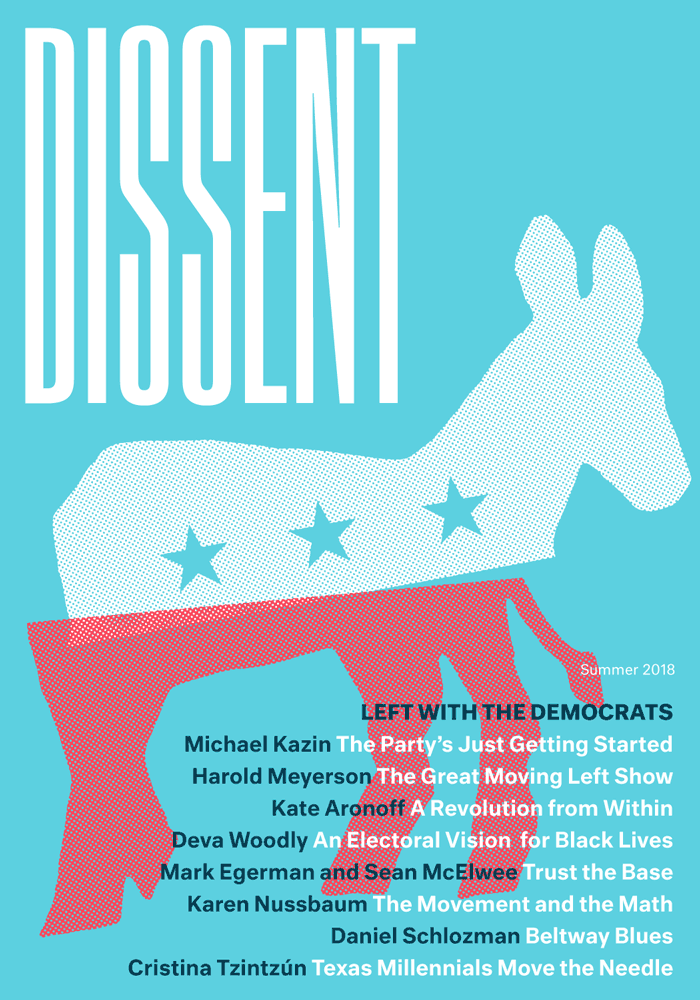

Mayor Bill de Blasio inaugurates a new bus line in the Bronx, September 2017 (New York City Department of Transportation / Flickr)
Luxury condominium towers under construction in Williamsburg, Brooklyn, 2013 (Michael Tapp / Flickr)
Hydrocarbons from the Williams Central compressor, photographed with a FLIR thermal imaging camera and a normal digital camera, Brooklyn Township, Pennsylvania, 2014. © Nina Berman/Marcellus Shale Documentary Project 2014.
Composite of drilling rig image from Rome, Pennsylvania and hundreds of images taken by a Hop Bottom, Pennsylvania resident of the volume of truck traffic passing in front of a neighbor’s home over four days of the operation of a nearby shale gas well pad. © Nina Berman/Marcellus Shale Documentary Project 2015.
The nightmare situations preppers imagine are already happening—to people whose wealth and status don’t protect them. Above, Hurricane Maria relief efforts in Puerto Rico, October 2017 (Agustín Montañez / National Guard)
From the music video for “Unforgettable,” by French Montana, featuring Swae Lee (FrenchMontanaVEVO / Youtube)
Wizkid performing at Royal Albert Hall, London, September 2017 (Michael Tubi / Alamy Live News)
The cover of L’antinorm, published by the Homosexual Front for Revolutionary Action (FHAR), February 1973. The subtitle reads “Workers of the world, stroke yourselves!”
Jair Bolsonaro, at a debate about violence against women in Brazil’s chamber of deputies, September 2016. Photo by Marcelo Camargo/Agência Brasil.
Jair Bolsonaro, at a debate about violence against women in Brazil’s chamber of deputies, September 2016. Photo by Marcelo Camargo/Agência Brasil.
The front page of the Canard, February 28, 2018. Courtesy of Le Canard enchaîné.
Selling drugs in the shadow of an abandoned factory, North Philadelphia. Photo by George Karandinos.
Bundle of $10 bags of heroin. Photo by Fernando Montero Castrillo.
On a dilapidated Havana street, an elderly man searches through the garbage. February 2018, Havana, Cuba. Photo by David Himbert / Hans Lucas Studio.
A state employee reads the newspaper at the reception of the Defense Committee of the Revolution (CDR). March 2016, Havana, Cuba. Photo by David Himbert / Hans Lucas Studio.
A street vendor selling tropical fruits in front of a Benetton shop in Old Havana. May 2017, Havana, Cuba. Photo by David Himbert / Hans Lucas Studio.
At the University of Bristol, February 28 (Bristol UCU / Facebook)
Students rally in support of the lecturers’ strike, February 23 (Bristol UCU / Facebook)
Part of a much larger painted banner in Bristol, February 28 (Bristol UCU / Facebook)
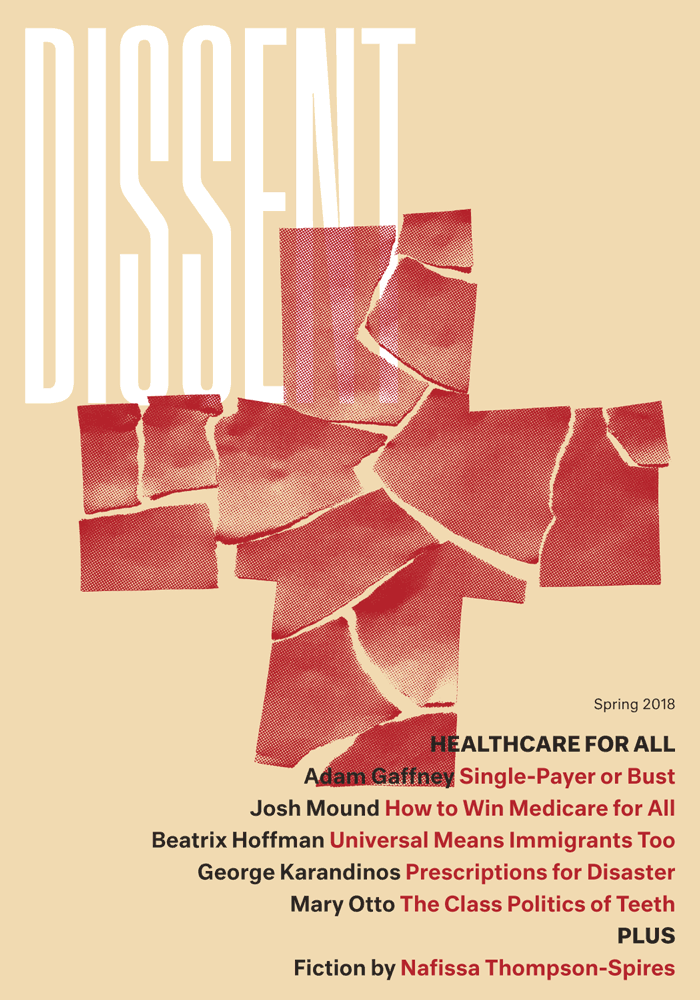
AMLO mural in Mexico City, 2007 (Randal Sheppard / Flickr)
MORENA supporters at a rally in Itzapalapa, Mexico City, April 2015 (Eneas De Troya / Flickr)
Audience members waiting for the program to begin at a MORENA rally, March 2016 (Eneas De Troya / Flickr)
MORENA supporter leafletting against energy reforms, 2013 (Eneas De Troya / Flickr)
Andrés Manuel López Obrador on the campaign trail during his previous presidential run, May 2012 (Arturo Alfaro Galán)
Courtesy of Robert Greene
At a protest against the alleged Pizzagate conspiracy, Washington, D.C., March 25, 2017 (Blink O’fanaye / Flickr)
[W]hen we refer to all Kurdish fighters synonymously, we simply blur the fact that they have very different politics. . . right now, yes, the people are facing the Islamic State threat, so it’s very important to have a unified focus. But the truth is, ideologically and politically these are very, very different systems. Actually almost opposite to each other. —Dilar Dirik, “Rojava vs. the World,” February 2015
The Kurds, who share ethnic and cultural similarities with Iranians and are mostly Muslim by religion (largely Sunni but with many minorities), have long struggled for self-determination. After World War I, their lands were divided up between Iraq, Iran, Syria, and Turkey. In Iran, though there have been small separatist movements, Kurds are mostly subjected to the same repressive treatment as everyone else (though they also face Persian and Shi’ite chauvinism, and a number of Kurdish political prisoners were recently executed). The situation is worse in Iraq, Syria, and Turkey, where the Kurds are a minority people subjected to ethnically targeted violations of human rights.
Iraq: In 1986–89, Saddam Hussein conducted a genocidal campaign in which tens of thousands were murdered and thousands of Kurdish villages destroyed, including by bombing and chemical warfare. After the first Gulf War, the UN sought to establish a safe haven in parts of Kurdistan, and the United States and UK set up a no-fly zone. In 2003, the Kurdish peshmerga sided with the U.S.-led coalition against Saddam Hussein. In 2005, after a long struggle with Baghdad, the Iraqi Kurds won constitutional recognition of their autonomous region, and the Kurdistan Regional Government has since signed oil contracts with a number of Western oil companies as well as with Turkey. Iraqi Kurdistan has two main political parties, the Kurdistan Democratic Party (KDP) and the Patriotic Union of Kurdistan (PUK), both clan-based and patriarchal.
Turkey: For much of its modern history, Turkey has pursued a policy of forced assimilation towards its minority peoples; this policy is particularly stringent in the case of the Kurds—until recently referred to as the “mountain Turks”—who make up 20 percent of the total population. The policy has included forced population transfers; a ban on use of the Kurdish language, costume, music, festivals, and names; and extreme repression of any attempt at resistance. Large revolts were suppressed in 1925, 1930, and 1938, and the repression escalated with the formation of the PKK as a national liberation party, resulting in civil war in the Kurdish region from 1984 to 1999.
Syria: Kurds make up perhaps 15 percent of the population and live mostly in the northeastern part of Syria. In 1962, after Syria was declared an Arab republic, a large number of Kurds were stripped of their citizenship and declared aliens, which made it impossible for them to get an education, jobs, or any public benefits. Their land was given to Arabs. The PYD was founded in 2003 and immediately banned; its members were jailed and murdered, and a Kurdish uprising in Qamishli was met with severe military violence by the regime. When the uprising against Bashar al Assad began as part of the Arab Spring, Kurds participated, but after 2012, when they captured Kobani from the Syrian army, they withdrew most of their energy from the war against Assad in order to set up a liberated area. For this reason, some other parts of the Syrian resistance consider them Assad’s allies. The Kurds in turn cite examples of discrimination against them within the opposition.
<!–
–>
Proclamation of the reclaiming of Alcatraz by the Indians of All Tribes, November 1969 (National Parks Service)
Entrance to Alcatraz in 2008 (Babak Fakhamzadeh / Flickr)
Letter from the Indians of All Tribes to the National Council on Indian Opportunity, January 1970 (National Parks Service)
Sign on Alcatraz during occupation, 1969–60 (National Parks Service)
Members of the People’s Guard on motorcycles, 1920. Courtesy of Eric Lee.
Armed group of the Menshevik People’s Guard, 1920. Courtesy of Eric Lee.
Eleven-year-old Liza Greenberg, daughter of David and Suzanne Nossel. Photo by Todd Gitlin.
Protest against neoliberalism in Colombia, 2013


#mc_embed_signup{background:#fff; clear:left; font:18px Helvetica,Arial,sans-serif;} /* Add your own MailChimp form style overrides in your site stylesheet or in this style block. We recommend moving this block and the preceding CSS link to the HEAD of your HTML file. */

